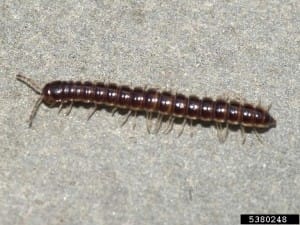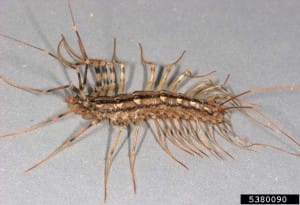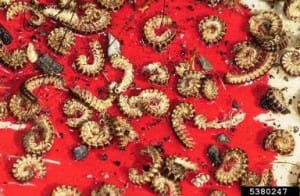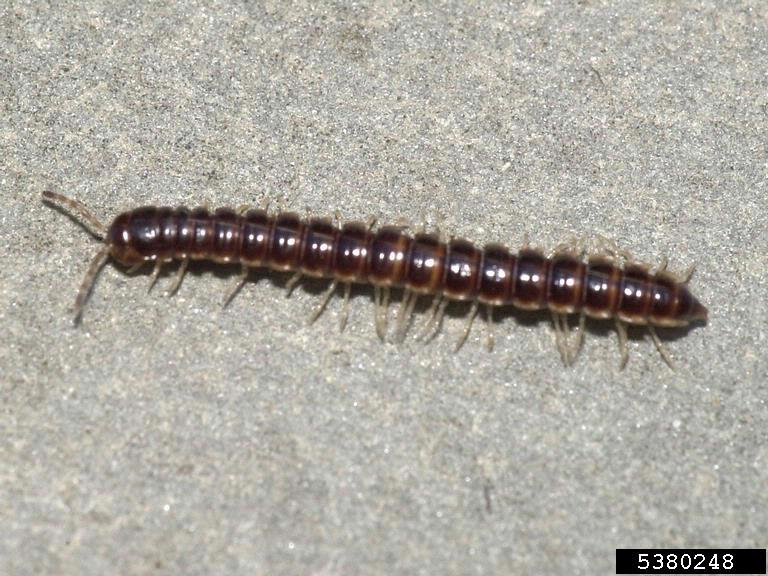
This is a millipede. See the following information to know how to identify them or read the UGA publication Millipedes and Centipedes for complete identification and control information.
This information taken from the UGA publication Millipedes and Centipedes
Revised by Elmer W. Gray, Extension Entomologist
Original document produced by Dr. Beverly Sparks
Millipedes are often called 1,000-legged worms or rain worms. They are wormlike, with rounded body segments that each bear two pairs of legs. The head is rounded with short antennae. Species can vary in length from less than 1 to 2 or more inches. They are light brown to black in color.

Centipedes are often called 100-legged worms and have one pair of legs on each of their body segments. All centipede species are more or less wormlike and have a flattened body with a distinct head that bears a pair of long antennae. Jaws containing poison glands are located on the first body segment immediately behind the head. Depending on the species, centipedes can vary in length from 1 to 12 or more inches when mature. The most common centipede species found in Georgia are less than 5 inches long. Centipedes vary in color from light yellow to dark brown and reddish brown.

Millipedes and centipedes are not insects. They are actually more closely related to lobsters, crayfish and shrimp. However, unlike their marine cousins, millipedes and centipedes are land dwellers. They are most often found in moist habitats or areas with high humidity.
Millipedes and centipedes do not carry diseases that affect people, animals or plants. Millipedes do occasionally damage seedling plants by feeding on stems and leaves, and may enter homes in large numbers during periods of migration and become a considerable nuisance. They do not cause damage inside the home, although they may leave a stain if they are crushed. Centipedes, which have poison glands and can bite, pose an occasional threat to humans.
